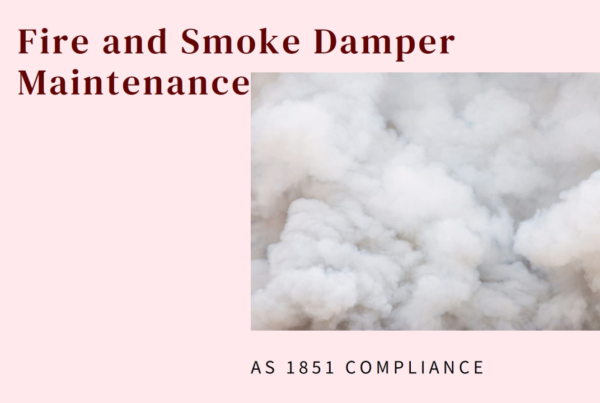Annual Fire Safety Assessment as per AS 1851: Ensuring Safety and Compliance
Fire safety is a critical component of building management, aiming to protect lives and property from the devastating effects of fire. In Australia, the standard governing the routine servicing of fire protection systems and equipment is AS 1851. This standard outlines the procedures for maintaining, inspecting, and testing various fire safety measures to ensure they are operational and effective. One of the essential aspects of this standard is the annual fire safety assessment.
1. Understanding AS 1851
AS 1851, titled “Routine service of fire protection systems and equipment,” provides a comprehensive framework for the ongoing maintenance of fire safety systems. It covers various components, including fire detection and alarm systems, fire suppression systems, fire hydrants, hose reels, and emergency lighting. The standard ensures these systems are inspected and maintained regularly, guaranteeing they function correctly in an emergency.
2. Importance of Annual Fire Safety Assessments
The annual fire safety assessment is a critical component of AS 1851. This assessment is a thorough evaluation of a building’s fire protection systems and equipment, ensuring they comply with the standard’s requirements and are ready to perform in the event of a fire. The importance of this assessment cannot be overstated:
- **Life Safety:** Properly maintained fire protection systems can save lives by providing early detection and suppression of fires, allowing occupants to evacuate safely.
- **Property Protection:** Effective fire safety measures can prevent significant property damage, reducing financial losses and ensuring business continuity.
- **Legal Compliance:** Adhering to AS 1851 is a legal requirement in many jurisdictions. Failure to comply can result in hefty fines and legal liabilities.
- **Insurance Requirements:** Many insurance policies mandate compliance with AS 1851. Non-compliance can lead to increased premiums or denial of claims in the event of a fire.
3. Components of the Annual Fire Safety Assessment
An annual fire safety assessment as per AS 1851 involves several key steps:
- **Inspection of Fire Protection Systems:** This includes checking fire detection and alarm systems, fire suppression systems (such as sprinklers and extinguishers), fire hydrants, hose reels, and emergency lighting. Inspectors look for signs of wear and tear, damage, and other issues that could impair functionality.
- **Testing and Maintenance:** Systems are tested to ensure they operate correctly. This may involve simulated fire conditions to check the response of detection and alarm systems, flow tests for hydrants and hose reels, and discharge tests for extinguishers and suppression systems. Any identified issues are addressed and rectified.
- **Documentation and Record-Keeping:** Detailed records of the inspection, testing, and maintenance activities are maintained. This documentation is crucial for demonstrating compliance with AS 1851 and can be vital in the event of an audit or investigation.
- **Review and Update of Fire Safety Plans:** The annual assessment is also an opportunity to review and update fire safety plans, ensuring they remain effective and reflect any changes in the building layout, occupancy, or usage.
4. Best Practices for Conducting Annual Fire Safety Assessments
To ensure the effectiveness of the annual fire safety assessment, building owners and managers should follow best practices:
- **Engage Qualified Professionals:** Hire certified fire safety professionals with expertise in AS 1851 to conduct the assessments. Their knowledge and experience are vital for identifying and addressing potential issues.
- **Regular Training and Drills:** Conduct regular fire safety training and drills for building occupants. This ensures everyone knows how to respond in an emergency and can identify potential fire hazards.
- **Integrated Fire Safety Systems:** Ensure that all fire protection systems are integrated and work together seamlessly. This enhances the overall effectiveness of the fire safety strategy.
- **Continuous Improvement:** Use the findings from the annual assessment to continuously improve fire safety measures. Address any weaknesses promptly and update systems as needed to incorporate new technologies and best practices.
5. Conclusion
The annual fire safety assessment as per AS 1851 is a vital process that ensures the safety and compliance of buildings in Australia. By adhering to the standard, building owners and managers can protect lives, safeguard property, and meet legal and insurance requirements. Regular, thorough assessments conducted by qualified professional as CYBIL CONSULTS is essential for maintaining effective fire protection systems and ensuring a swift, coordinated response in the event of a fire.





